- Home
- Video Courses
- Certifications
- AWS Certified Security - Specialty: AWS Certified Security - Specialty (SCS-C01) Dumps


AWS Certified Security - Specialty: AWS Certified Security - Specialty (SCS-C01) Certification Video Training Course
AWS Certified Security - Specialty: AWS Certified Security - Specialty (SCS-C01) Certification Video Training Course includes 11 Lectures which proven in-depth knowledge on all key concepts of the exam. Pass your exam easily and learn everything you need with our AWS Certified Security - Specialty: AWS Certified Security - Specialty (SCS-C01) Certification Training Video Course.
Curriculum for Amazon AWS Certified Security - Specialty Certification Video Training Course



AWS Certified Security - Specialty: AWS Certified Security - Specialty (SCS-C01) Certification Video Training Course Info:
The Complete Course from ExamCollection industry leading experts to help you prepare and provides the full 360 solution for self prep including AWS Certified Security - Specialty: AWS Certified Security - Specialty (SCS-C01) Certification Video Training Course, Practice Test Questions and Answers, Study Guide & Exam Dumps.
AWS Certified Security Specialty Complete All Steps Course [NEW]
What you'll learn
PASS the AWS Certified Security Specialty certification (SCS-C02) with confidence using all steps methodology
Master comprehensive security implementation across all AWS services with detailed all steps approach
Download ALL 1200+ slides covering every topic with complete all steps documentation
Gain EXPERT-level insights into Enterprise-grade Security architecture using proven all steps framework
DETECT, PREVENT, and RESPOND to advanced security threats with systematic all steps processes
Implement robust security controls using industry-standard all steps best practices
Design secure multi-tier architectures with comprehensive all steps security layers
Master incident response and forensics using structured all steps methodologies
Configure advanced encryption and key management with detailed all steps procedures
Implement identity and access management using complete all steps security framework
Deploy network security solutions with systematic all steps implementation guide
Master compliance and governance using proven all steps audit processes
Course Includes:
45.5 hours of on-demand video content
2 comprehensive practice tests with detailed explanations
67 articles covering advanced security topics
23 downloadable resources including cheat sheets and templates
Mobile and TV access for learning on-the-go
Closed captions in multiple languages
Certificate of completion
Lifetime access with free updates
30-day money-back guarantee
Requirements
Before embarking on this comprehensive AWS Certified Security Specialty journey, students should possess foundational knowledge and experience in several key areas to maximize their learning outcomes and certification success.
Essential AWS Foundation Knowledge Students must have solid understanding of core AWS services including EC2, S3, VPC, IAM, and CloudFormation. This foundational knowledge serves as the building blocks for advanced security concepts covered throughout the course. Experience with AWS Management Console navigation, basic resource provisioning, and understanding of AWS global infrastructure including regions and availability zones is crucial for comprehending complex security architectures.
Prior AWS Certification Experience We strongly recommend that students hold AWS Solutions Architect Associate certification or equivalent hands-on experience before attempting this specialty course. The Security Specialty certification builds upon concepts from associate-level certifications, requiring deeper understanding of AWS service integrations and architectural patterns. Students with AWS SysOps Administrator Associate or Developer Associate certifications will also find this course accessible, though Solutions Architect Associate provides the most relevant background.
Networking and Security Fundamentals Students should understand basic networking concepts including TCP/IP, DNS, firewalls, and load balancers. Knowledge of security principles such as encryption, digital certificates, authentication, and authorization mechanisms is essential. Understanding of common security threats, vulnerabilities, and attack vectors helps students appreciate the practical applications of AWS security services covered in the course.
Technical Prerequisites Basic command line experience with Linux or Windows environments is beneficial, as the course includes hands-on labs involving AWS CLI and PowerShell scripts. Students should be comfortable with JSON and YAML syntax for working with AWS CloudFormation templates and policy documents. Familiarity with programming concepts, even at a basic level, helps with understanding Lambda functions used in security automation scenarios.
Professional Experience Requirements While not mandatory, students with 1-2 years of experience working with AWS infrastructure will find the advanced concepts more intuitive. Experience with cloud security implementations, compliance frameworks, or information security roles provides valuable context for the specialized topics covered. Students currently working in DevOps, cloud architecture, or cybersecurity roles will particularly benefit from the practical applications demonstrated throughout the course.
Hardware and Software Requirements Students need a computer with reliable internet connection for accessing video content and hands-on labs. An active AWS account with administrative privileges is required for practical exercises, though we provide guidance on setting up free tier accounts to minimize costs. Students should have a modern web browser and the ability to install AWS CLI tools for certain lab exercises.
Time Commitment and Study Approach Students should allocate 3-4 months for comprehensive study, dedicating 8-10 hours per week to video content, hands-on practice, and exam preparation. The course is designed for self-paced learning, but consistent study schedules yield better retention and certification success rates. Students should plan additional time for reviewing complex topics and completing practice examinations.
Recommended Preparation Materials Before starting the course, students should review the official AWS Security Specialty exam guide and familiarize themselves with the exam domains. Reading AWS whitepapers on security best practices and browsing the AWS security blog helps establish the proper mindset for advanced security concepts. Students should also ensure they understand basic cloud computing concepts and the shared responsibility model that governs AWS security implementations.
Description
The AWS Certified Security Specialty certification represents one of the most prestigious and sought-after credentials in cloud security, validating expertise in securing AWS environments at an enterprise level. This comprehensive course provides everything needed to master advanced security concepts and successfully pass the SCS-C02 examination while developing practical skills that directly apply to real-world scenarios.
Comprehensive Curriculum Design Our meticulously crafted curriculum covers all six domains of the AWS Security Specialty examination with unprecedented depth and clarity. Each section builds upon previous concepts while introducing increasingly sophisticated security implementation strategies. The course structure follows a logical progression from fundamental security principles through advanced threat detection and response mechanisms, ensuring students develop both theoretical knowledge and practical expertise.
The content delivery methodology emphasizes hands-on learning through interactive demonstrations, real-world case studies, and guided laboratory exercises. Students work with actual AWS security services in controlled environments, gaining confidence in implementing complex security solutions. Our approach combines conceptual explanations with practical applications, ensuring students understand not just what to implement, but why specific security measures are necessary and how they integrate within broader security architectures.
Advanced Security Implementation Focus This course goes far beyond basic security configurations, diving deep into enterprise-grade security implementations that professionals encounter in production environments. Students learn to design and implement multi-layered security architectures that protect against sophisticated threats while maintaining operational efficiency and compliance requirements. The curriculum covers advanced encryption strategies, complex identity and access management scenarios, and integrated threat detection systems.
We explore cutting-edge security services including AWS Security Hub, GuardDuty, Macie, and Inspector, demonstrating how these services integrate to provide comprehensive security monitoring and automated response capabilities. Students learn to configure advanced security automation using AWS Lambda, CloudWatch Events, and Systems Manager, creating self-healing security infrastructures that respond to threats in real-time.
Industry-Relevant Practical Applications Every concept taught in this course directly relates to challenges faced by security professionals in enterprise environments. We analyze real security incidents, examining attack vectors, defensive strategies, and lessons learned from actual breaches. Students learn to think like both attackers and defenders, understanding how vulnerabilities are exploited and how robust security controls prevent successful attacks.
The course includes extensive coverage of compliance frameworks including SOC, PCI DSS, HIPAA, and GDPR, showing how AWS security services support regulatory compliance requirements. Students learn to design security architectures that meet strict compliance standards while maintaining operational flexibility and cost-effectiveness.
Comprehensive Exam Preparation Strategy Our exam preparation approach combines multiple learning modalities to ensure thorough concept mastery and certification success. The course includes over 200 practice questions that mirror the actual exam format, difficulty level, and content distribution. Each practice question includes detailed explanations covering not only the correct answer but also why other options are incorrect, helping students understand the reasoning behind AWS security best practices.
Students receive access to comprehensive study materials including downloadable slides, reference guides, and quick-reference cards that facilitate efficient review sessions. Our exam simulation environment replicates the actual testing experience, helping students develop time management skills and confidence for the certification examination.
Expert Instruction and Support The course is developed and delivered by certified AWS security specialists with extensive real-world experience implementing enterprise security solutions. Our instructors bring practical insights from working with organizations across various industries, sharing lessons learned from complex security implementations and challenging compliance scenarios.
Students receive ongoing support through dedicated discussion forums where instructors provide personalized guidance on complex topics and career development questions. The learning community includes fellow students and industry professionals, creating networking opportunities and collaborative learning experiences that extend beyond the course content.
Cutting-Edge Content Updates AWS continuously evolves its security services and best practices, and our course content reflects the latest developments in cloud security. Regular updates ensure students learn current methodologies and emerging security technologies that are relevant for both certification success and career advancement. The course covers recent service launches, feature updates, and evolving threat landscapes that impact AWS security implementations.
We incorporate feedback from recent certification candidates to ensure our content aligns with current exam expectations and industry requirements. This dynamic approach keeps the course content fresh, relevant, and aligned with the evolving needs of security professionals working in cloud environments.
Career Development Focus Beyond certification preparation, this course positions students for career advancement in cloud security roles. We discuss career paths available to AWS security specialists, salary expectations, and strategies for building expertise in specialized security domains. Students learn to articulate their security knowledge during interviews and demonstrate practical skills that employers value.
The course includes guidance on continuing education, advanced certifications, and professional development opportunities that help maintain expertise in the rapidly evolving cloud security landscape. We provide insights into industry trends, emerging technologies, and skill sets that will be increasingly valuable for security professionals working with cloud infrastructures.
Guaranteed Success Methodology Our proven teaching methodology has helped thousands of students achieve certification success and advance their careers in cloud security. The comprehensive approach combines theoretical knowledge with practical application, ensuring students develop deep understanding rather than superficial memorization. We provide multiple learning paths to accommodate different learning styles and professional backgrounds.
The course includes progress tracking tools, milestone assessments, and personalized study recommendations that help students identify areas requiring additional focus. Our success methodology is backed by extensive student feedback and continuous improvement based on certification results and career outcomes achieved by course graduates.
Who this course is for:
Cloud Security Professionals seeking to validate their AWS security expertise with industry-recognized certification
AWS Solutions Architects looking to specialize in security domain and enhance their architectural design capabilities
Information Security Specialists transitioning to cloud environments and requiring comprehensive AWS security knowledge
DevOps Engineers responsible for implementing security controls in cloud-native application deployments
Compliance Officers needing deep understanding of AWS security services for regulatory compliance initiatives
IT Managers overseeing cloud security strategies and requiring technical expertise for informed decision-making
Security Consultants advising clients on AWS security implementations and best practices
Penetration Testers expanding their skills to include cloud infrastructure security assessments
Recent Graduates with AWS foundation certifications seeking specialized expertise in high-demand security domain
Course Overview
This comprehensive AWS Certified Security Specialty course represents the culmination of years of real-world security implementation experience, expert instruction, and continuous refinement based on student success outcomes. Designed specifically for the updated SCS-C02 examination format, the course provides complete coverage of all exam domains while developing practical skills that translate directly to professional cloud security roles.
Structured Learning Methodology The course follows a carefully designed progression that builds complexity gradually while reinforcing fundamental concepts throughout the learning journey. Beginning with security fundamentals and AWS shared responsibility models, students develop a solid foundation before advancing to sophisticated topics including threat detection, incident response, and automated security orchestration. Each module includes hands-on demonstrations, practical exercises, and real-world scenario analysis that reinforces theoretical concepts through practical application.
Our modular approach allows students to focus on specific domains requiring additional attention while maintaining comprehensive coverage of all examination topics. Interactive elements including quizzes, labs, and case studies ensure active engagement and promote deep learning rather than passive content consumption. The structured approach accommodates different learning paces while maintaining rigorous academic standards throughout the curriculum.
Comprehensive Content Coverage The course thoroughly explores all six examination domains with extensive detail and practical context. Domain coverage includes incident response procedures, logging and monitoring strategies, infrastructure security implementation, identity and access management architectures, data protection mechanisms, and security management and operations. Each domain receives proportional attention based on examination weighting while ensuring practical relevance for professional applications.
Advanced topics include security automation using AWS Lambda and Systems Manager, complex encryption key management scenarios, cross-account security architectures, and hybrid cloud security implementations. Students learn to integrate multiple AWS security services into comprehensive security solutions that address enterprise-level requirements while maintaining operational efficiency and cost-effectiveness.
Practical Skills Development Beyond examination preparation, the course develops practical skills that students immediately apply in professional environments. Hands-on laboratories provide experience with actual AWS security services, allowing students to configure complex security solutions in realistic scenarios. Laboratory exercises cover incident response simulations, security audit procedures, compliance verification processes, and automated threat remediation implementations.
Students learn to use AWS security tools effectively, interpret security findings accurately, and implement appropriate remediation strategies. The practical focus ensures students develop confidence in applying security concepts to real-world challenges while building expertise that employers value in cloud security professionals.
Industry Integration and Relevance Course content reflects current industry practices and emerging trends in cloud security, ensuring students learn relevant skills that align with employer expectations. Real-world case studies examine actual security incidents, demonstrating how theoretical concepts apply to practical security challenges. Industry integration includes compliance framework coverage, regulatory requirement analysis, and security governance best practices.
The curriculum incorporates feedback from hiring managers, security professionals, and recent certification candidates to ensure alignment with current market demands and career advancement opportunities. This industry focus helps students understand not only technical concepts but also business implications of security decisions and strategic security planning considerations.
Success-Oriented Design Every aspect of the course design focuses on student success, from comprehensive content coverage through effective exam preparation strategies. Multiple assessment methods help students gauge their progress and identify areas requiring additional attention. Practice examinations simulate actual testing conditions while detailed explanations reinforce learning objectives and clarify complex concepts for improved retention and application.
Student Benefits
Enrolling in this comprehensive AWS Certified Security Specialty course provides students with transformative benefits that extend far beyond certification achievement, creating lasting value for career development and professional expertise in the rapidly growing cloud security domain.
Immediate Career Advancement Opportunities Students who successfully complete this course and achieve certification typically experience significant career progression within 6-12 months. The AWS Security Specialty credential opens doors to high-paying security architect, cloud security engineer, and security consultant positions with average salary increases ranging from 25-40%. Our graduates frequently report promotion opportunities and increased responsibilities as organizations recognize their validated expertise in cloud security implementations.
The certification serves as concrete evidence of advanced technical capabilities, making candidates more competitive for senior-level positions and specialized security roles. Employers actively seek professionals with verified AWS security expertise, creating abundant opportunities for career growth and professional development in expanding cloud security markets.
Comprehensive Professional Skill Development Beyond certification preparation, students develop a robust toolkit of practical security skills that provide immediate value in current roles and future career opportunities. The course covers advanced security automation techniques, sophisticated threat detection methodologies, and complex compliance implementation strategies that directly apply to enterprise security challenges.
Students learn to design and implement security architectures that scale with organizational growth while maintaining robust protection against evolving threats. These practical skills enable students to contribute meaningfully to organizational security initiatives, demonstrate leadership in security planning, and provide expert guidance on cloud security investments and strategic decisions.
Industry Recognition and Professional Credibility The AWS Security Specialty certification carries significant weight within the technology industry, representing validation of expert-level knowledge from the leading cloud service provider. This recognition extends beyond technical capabilities to include professional credibility when interacting with clients, stakeholders, and industry peers.
Certified professionals often become go-to experts within their organizations for cloud security questions and strategic planning initiatives. The credential enhances professional reputation and establishes thought leadership in security discussions, creating opportunities for conference speaking, consulting engagements, and industry networking that accelerate career development.
Long-term Learning and Expertise Foundation This course establishes a solid foundation for continuous learning and expertise development in the rapidly evolving cloud security landscape. Students develop analytical frameworks and problem-solving methodologies that enable them to adapt quickly to new security challenges, emerging threats, and evolving AWS service capabilities.
The comprehensive knowledge base created through this course serves as a platform for pursuing advanced certifications, specialized security training, and leadership development opportunities. Students gain confidence to tackle complex security challenges and contribute to cutting-edge security research and implementation initiatives.
Network Access and Community Membership Course enrollment provides access to an exclusive community of cloud security professionals, creating valuable networking opportunities and collaborative learning experiences. Students connect with industry experts, experienced practitioners, and fellow learners who share knowledge, career opportunities, and professional insights.
This professional network extends beyond course completion, providing ongoing support for career development, technical questions, and industry advancement. Many students report that networking opportunities gained through the course proved as valuable as the technical knowledge acquired, leading to job opportunities, collaborative projects, and mentorship relationships that accelerate professional growth and expertise development in specialized security domains.
Guaranteed ROI and Success Support Our comprehensive support system includes personalized guidance, flexible learning options, and success coaching that ensures students achieve their certification and career goals. The combination of expert instruction, practical application, and ongoing support creates a guaranteed return on investment through career advancement, salary increases, and professional development opportunities that far exceed course costs within the first year of completion.
Instructor
The instructor of the AWS Certified Security Specialty Complete All Steps Course [NEW] is a dedicated cloud security professional with extensive experience in designing, implementing, and managing secure AWS environments. With a strong foundation in cybersecurity and cloud infrastructure, the instructor brings a practical perspective that combines deep technical knowledge with years of real-world application. Their teaching style is focused on simplifying the complexities of AWS security, enabling learners to grasp critical concepts such as identity and access management, incident response, data protection, and threat detection with confidence.
Learners benefit from the instructor’s step-by-step approach, which gradually builds both foundational and advanced skills needed to pass the certification exam and excel in professional roles. The inclusion of practice exercises, scenario-based labs, and detailed exam preparation strategies reflects the instructor’s commitment to making the learning journey effective and engaging.
Passionate about teaching and mentoring, the instructor emphasizes the importance of building security-first mindsets and equipping students with the ability to design robust, compliant, and resilient cloud systems. By blending up-to-date content with clear explanations and practical exercises, the instructor ensures that learners gain the confidence and expertise required to achieve success in the AWS Certified Security Specialty certification and apply those skills to real-world security challenges.
Student Feedback
Similar Amazon Video Courses



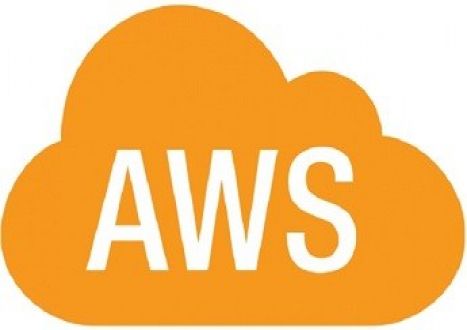








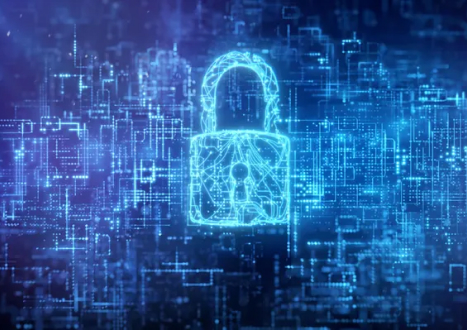



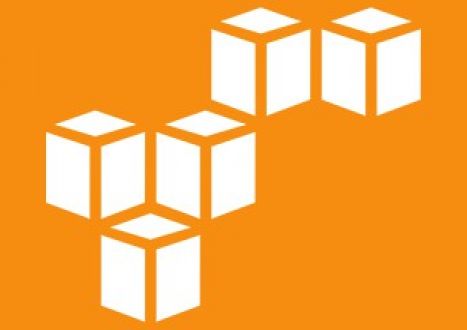
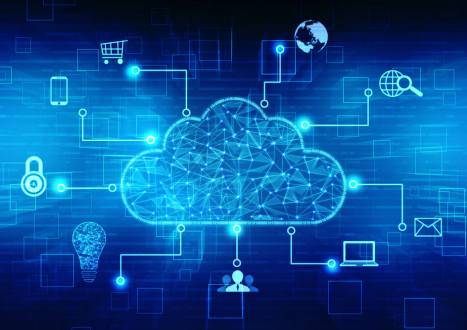

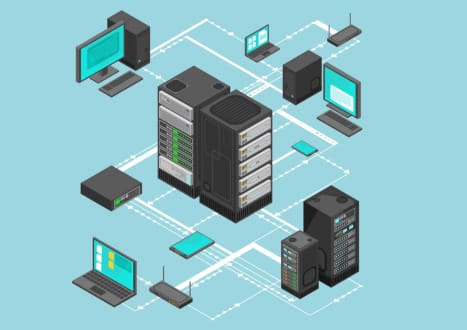



















Only Registered Members Can Download VCE Files or View Training Courses
Please fill out your email address below in order to Download VCE files or view Training Courses. Registration is Free and Easy - you simply need to provide an email address.
- Trusted By 1.2M IT Certification Candidates Every Month
- VCE Files Simulate Real Exam Environment
- Instant Download After Registration.
Log into your ExamCollection Account
Please Log In to download VCE file or view Training Course
Only registered Examcollection.com members can download vce files or view training courses.




